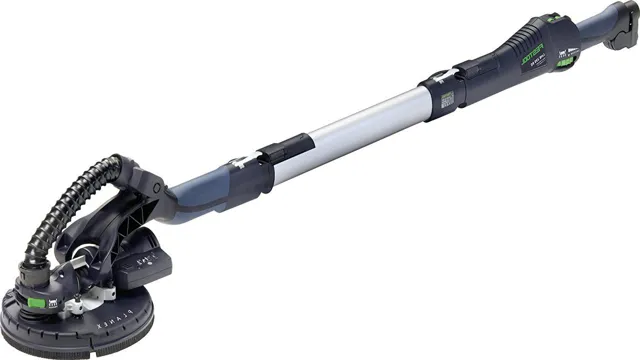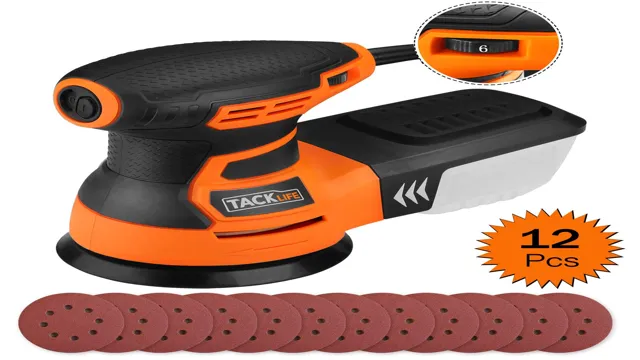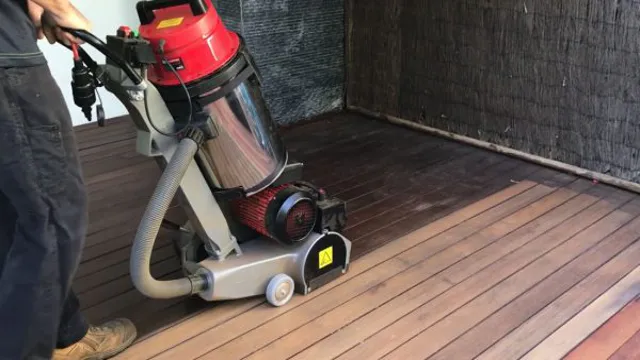Can a Drywall Sander be Used on Wood? Tips and Tricks for Effortless Sanding
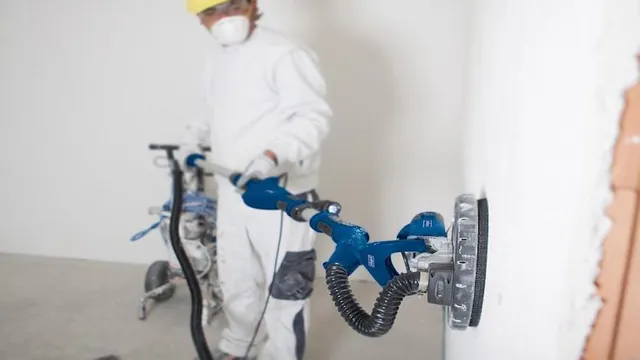
If you’re looking to sand wood, you may have considered using a drywall sander. While it may seem odd to use a tool designed for drywall on wood, there are some instances where it can come in handy. However, before you dive in and start sanding away, there are a few things you should know.
In this comprehensive guide, we’ll take a look at the benefits and drawbacks of using a drywall sander on wood, as well as some tips for getting the best results. So, grab your sandpaper and let’s get started!
What is a Drywall Sander?
A drywall sander is a power tool used to smooth out the surface of drywall. The sander is designed to have a vacuum attached to it, which helps to suck up the dust that is generated during the sanding process. The question of whether or not a drywall sander can be used on wood is a common one.
The short answer is yes, it can be used on wood. However, there are a few things to consider before doing so. First, it is important to make sure that the sander has the proper grit sandpaper for use on wood.
Second, the technique for sanding wood is different than that used for drywall. When sanding wood, it is important to use a light touch and work in the direction of the grain. Overall, a drywall sander can be a useful tool for sanding wood, but it is important to take the proper precautions to ensure a successful outcome.
Explanation of drywall sanders and their use in construction.
A drywall sander is a tool used in the construction industry to smooth and level the surface of drywall. It resembles a vacuum cleaner with a long handle and a sanding pad at the end. This tool allows construction workers to efficiently sand large areas of drywall without making a mess or causing strain on their arms.
The sanding pad can be attached to a variety of grits of sandpaper depending on the need for the job. Drywall sanders are commonly used to prep walls for painting or wallpapering. With its lightweight and easy-to-use design, drywall sanders have quickly become a staple in construction projects.
Additionally, they provide a smooth finish in a shorter amount of time compared to traditional hand sanding methods. If you’re in need of a fast and efficient way to sand drywall, a drywall sander is worth considering.
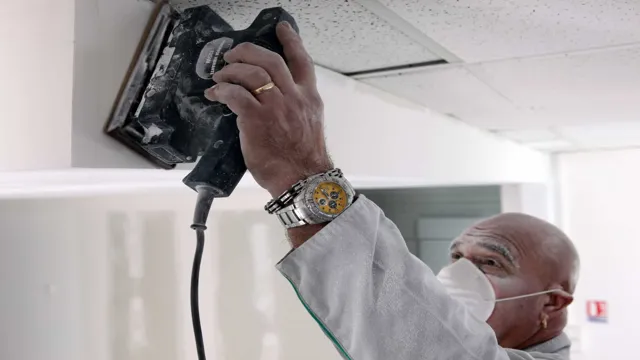
Can You Use a Drywall Sander on Wood?
If you’re thinking about using a drywall sander on wood, the short answer is yes, it can be done. However, there are a few things to keep in mind before you try it. Drywall sanders are primarily designed for use on drywall, which is a softer material than wood.
This means that if you plan to use a drywall sander on wood, you’ll need to take some precautions to avoid damaging the surface. For starters, it’s important to choose the right grit sandpaper for the job. A sandpaper that is too fine won’t be effective at removing material, while one that is too coarse can leave deep scratches and gouges in the wood.
Additionally, you’ll need to be mindful of the pressure you apply while using the sander, as too much pressure can also lead to damage. Overall, using a drywall sander on wood is possible, but it’s important to take your time and be careful to avoid damaging the surface.
Explanation as to whether or not a drywall sander can be used on wood.
Drywall sanders are tools designed specifically for sanding drywall. They feature a large, flat sanding surface that can handle large areas quickly and efficiently. While it may be tempting to try and use a drywall sander on wood, it is not recommended.
Drywall sanders are not designed for use on hardwood floors, furniture, or other wooden surfaces. Attempts to use them on wood can result in damage to the sander itself, as well as the wood you are trying to sand. Additionally, the different types of wood require different types of sandpaper and sanding techniques, which may not be compatible with the design of a drywall sander.
Therefore, if you want to sand wood, it is best to use a tool specifically designed for that purpose. A belt sander, orbital sander, or hand sander are all better options for sanding wood. Remember, always use the right tool for the job!
Factors to consider when using a drywall sander on wood.
Using a drywall sander on wood may seem like a cost-effective solution, but it’s important to consider several factors beforehand. Drywall sanders are designed to work on smoother surfaces and may not be the best option for wood, which can be rough and textured. First off, make sure the sander has an appropriate grit type and abrasive level for the type of wood you’re working with.
Additionally, take note of the sanding speed and make sure it’s adjustable, as wood requires a slower speed than drywall. You may also want to consider attaching finer grits to the sander to minimize any roughness on the wood surface. Finally, be prepared for more frequent cleaning and maintenance when using a drywall sander on wood, as the sawdust produced by the sander can get clogged in the motor and cause damage if not frequently removed.
Overall, while drywall sanders can be used on wood, it’s important to be mindful of the differences between the two materials and take the necessary precautions to achieve the desired result.
Safety Precautions
If you’re wondering whether a drywall sander can be used on wood, the answer is it depends. Drywall sanders are designed specifically for sanding drywall, and using them on wood can cause damage or uneven sanding. It’s best to use a sander designed for woodwork that has the appropriate sandpaper and settings for the specific type of wood you’re working with.
However, if you don’t have a wood sander and need to sand a small area, you can use a drywall sander, but with caution. Be sure to adjust the settings carefully and use a lower grit sandpaper to prevent any damage to the wood surface. Always wear protective gear such as eye goggles, a dust mask, and gloves to prevent dust exposure and injury.
Safety should be your utmost priority when using power tools, so take all necessary precautions to ensure a safe and effective sanding experience.
Precautions that one should take to ensure the safe use of a drywall sander on wood.
When using a drywall sander on wood, it’s essential to take several precautions to ensure safety. First and foremost, ensure that the sander is in good condition before use. Check all the electrical components, including the cord and switch, and ensure that the sander’s dust collection system is working correctly.
Always wear protective gear when sanding, including eye goggles, suitable gloves, and a respirator mask, as sawdust can cause eye irritation, skin rashes, and respiratory issues, especially for people with asthma. Additionally, ensure that the workspace is adequately ventilated by opening doors and windows and using fans or air purifiers. During operation, hold the sander with both hands, keep it in a stable position, and move it slowly, making sure not to apply too much pressure on the wood.
Finally, take periodic breaks to rest, stretch, and rehydrate. By following these safety measures, you can minimize the risk of accidents or injuries while using a drywall sander on wood.
Tips and Tricks for Sanding Wood with a Drywall Sander
If you’re wondering if a drywall sander can be used on wood, the answer is yes! In fact, a drywall sander can be a great tool for sanding large areas of wood, especially when you want a smooth and even finish. However, there are a few tips and tricks you should keep in mind to ensure you get the best results. First, make sure you use a specific type of sandpaper designed for wood, rather than the kind that’s meant for drywall.
This will help you achieve a more precise and even sanding job. Additionally, use a low speed setting on your sander to avoid overheating the wood or causing any unwanted damage. Finally, always wear protective gear like goggles and a mask to protect yourself from dust and debris.
With these tips in mind, you can achieve a professional-looking finish on your wood surfaces with the help of a drywall sander.
Techniques for sanding different types of wood with a drywall sander.
When it comes to sanding different types of wood with a drywall sander, there are a few important tips and tricks to keep in mind. First and foremost, it’s essential to choose the right sandpaper grit for the job. For rough or uneven wood surfaces, a lower grit (such as 60 or 80) may be necessary, while smoother surfaces may require a higher grit (such as 120 or 150).
Additionally, it’s important to move the sander quickly and steadily in a back-and-forth motion, allowing the tool to do the work rather than pressing too hard. When working with hardwoods, it’s often helpful to sand with the grain rather than against it, as this can help prevent scratches and damage to the wood. Finally, be sure to wear eye and hearing protection, and take frequent breaks to avoid fatigue and repetitive strain injuries.
By following these tips and tricks, you can achieve professional-level results when sanding wood with a drywall sander.
How to clean and maintain your drywall sander after use.
Drywall Sander If you’re working with wood, then it’s likely that you’ll need to sand it down at some point. One tool that can make this process a whole lot easier is a drywall sander. However, it’s essential to maintain and clean your drywall sander after each use to ensure it operates at its best and lasts as long as possible.
Start by unplugging the machine and rerouting the sandpaper. Then, use a dry cloth to remove any excess dust and debris. It’s also crucial to inspect the sander and replace any damaged parts, such as the sanding disc or hose, to ensure it remains efficient for your future projects.
By taking proper care of your drywall sander, you’ll save you time and money in the long run, meaning you can focus on creating quality work with ease.
Conclusion
In conclusion, can a drywall sander be used on wood? Technically, yes. However, it’s kind of like using a hammer as a screwdriver – it may work, but it’s not the right tool for the job. The design of a drywall sander is optimized for its intended purpose of sanding large, flat surfaces of drywall.
Trying to use it on wood may result in uneven sanding, damage to the wood, or just a frustrating and inefficient experience. So, while you could use a drywall sander on wood, it’s probably not the best idea. Stick to the right tool for the job and your projects will turn out much smoother (pun intended).
FAQs
Is it recommended to use a drywall sander on wood surfaces?
No, a drywall sander is specifically designed to be used on drywall surfaces. Using it on wood may damage the surface and the sander itself.
Can a drywall sander be fitted with a different sandpaper grit for use on wood?
It is not recommended to fit a drywall sander with a different sandpaper grit for use on wood. Wood sanders have a different attachment mechanism and are designed to handle the heavier workload of sanding wood.
What are the risks associated with using a drywall sander on wood surfaces?
Using a drywall sander on wood may result in uneven sanding, damaging the wood surface, and damaging the sander. It may also negate the warranty of the sander.
Are there any specific types of sanders designed for wood surfaces?
Yes, there are various sanders designed specifically for wood surfaces such as hand-held belt sanders, orbital sanders, and drum sanders.
Can using a drywall sander on wood cause any health hazards?
Yes, using a drywall sander on wood can create fine wood dust, which when inhaled can pose health hazards such as respiratory issues and eye irritation.
What precautions should be taken while sanding wood surfaces?
It is recommended to wear protective gear such as dust masks, goggles, and gloves while sanding wood surfaces. It is also important to follow the manufacturer’s instructions while using the sander.
Is it better to sand wood surfaces manually or use a powered sander?
A powered sander is more efficient and effective in sanding wood surfaces compared to manual sanding. However, it is important to select the right type of sander for the job at hand.

